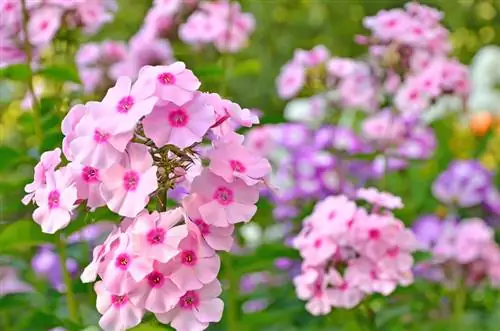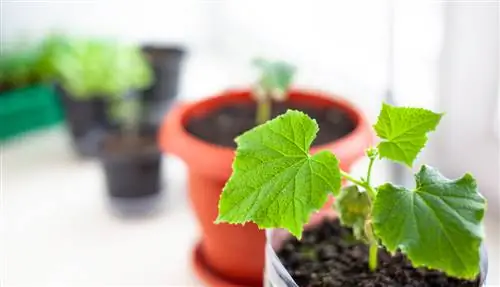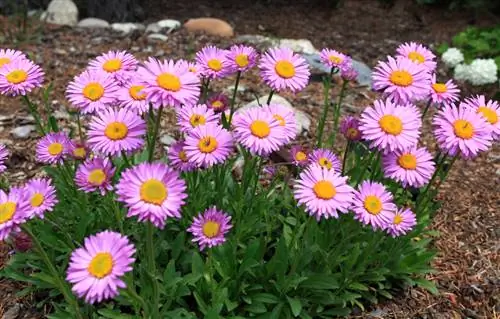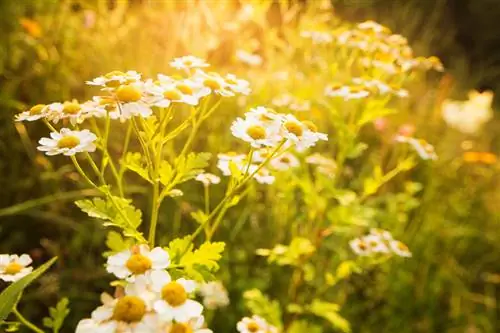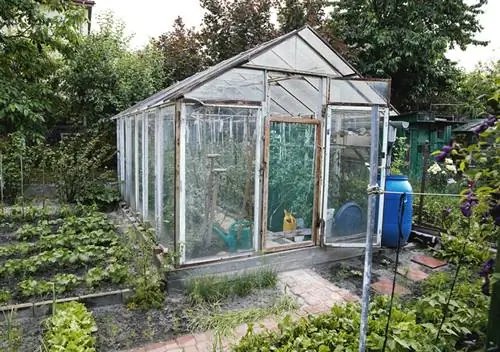- Author admin [email protected].
- Public 2023-12-16 16:46.
- Last modified 2025-01-23 11:22.
You can often admire phlox in cottage gardens. It delights viewers with its abundance of flowers and splendor of color almost all summer long. In addition to the well-known old varieties, there are now numerous new varieties that are much more resistant to diseases.
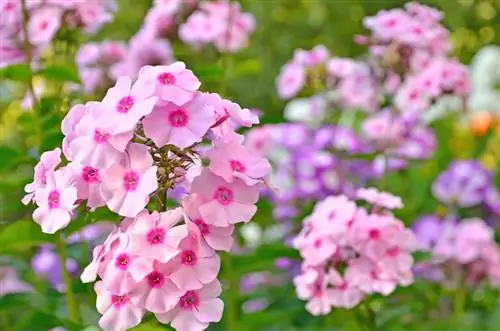
The right place for your Phlox
Most Phlox varieties like well-drained, slightly loamy soil. While some varieties cannot tolerate the blazing sun, other species, such as the meadow phlox, really like it. Tall growing varieties such as Phlox amplifolia, which can grow to be more than a meter tall, require a lot of nutrients. On poor soils they need to be fertilized regularly, ideally with well-rotted compost (€43.00 on Amazon) or stable manure.
If you are looking for a plant for your rock garden then you can also find Phlox. Some creeping varieties, such as carpet phlox or cushion phlox, grow in width rather than height. These ground cover plants prefer light, sandy soil. They also tolerate a longer dry period quite well, require only a few nutrients and can be left in the blazing sun.
The varieties Forest Phlox (Phlox divaricata) and Wandering Phlox (Phlox stolonifera) are suitable for a partially shaded location or for planting under trees. Both do not grow higher than around 30 cm. The slightly lower Phlox stolonifera blooms in May and June, when the Phlox divaricata has almost faded.
Phlox particularly likes this:
- full sun for late flowering varieties
- Part shade for early flowering varieties
- Windbreak
- permeable soil
- Compost or manure, well rotted
Tip
Phlox is so versatile that you can find a suitable variety for almost any location, from ground cover to tall perennials.

